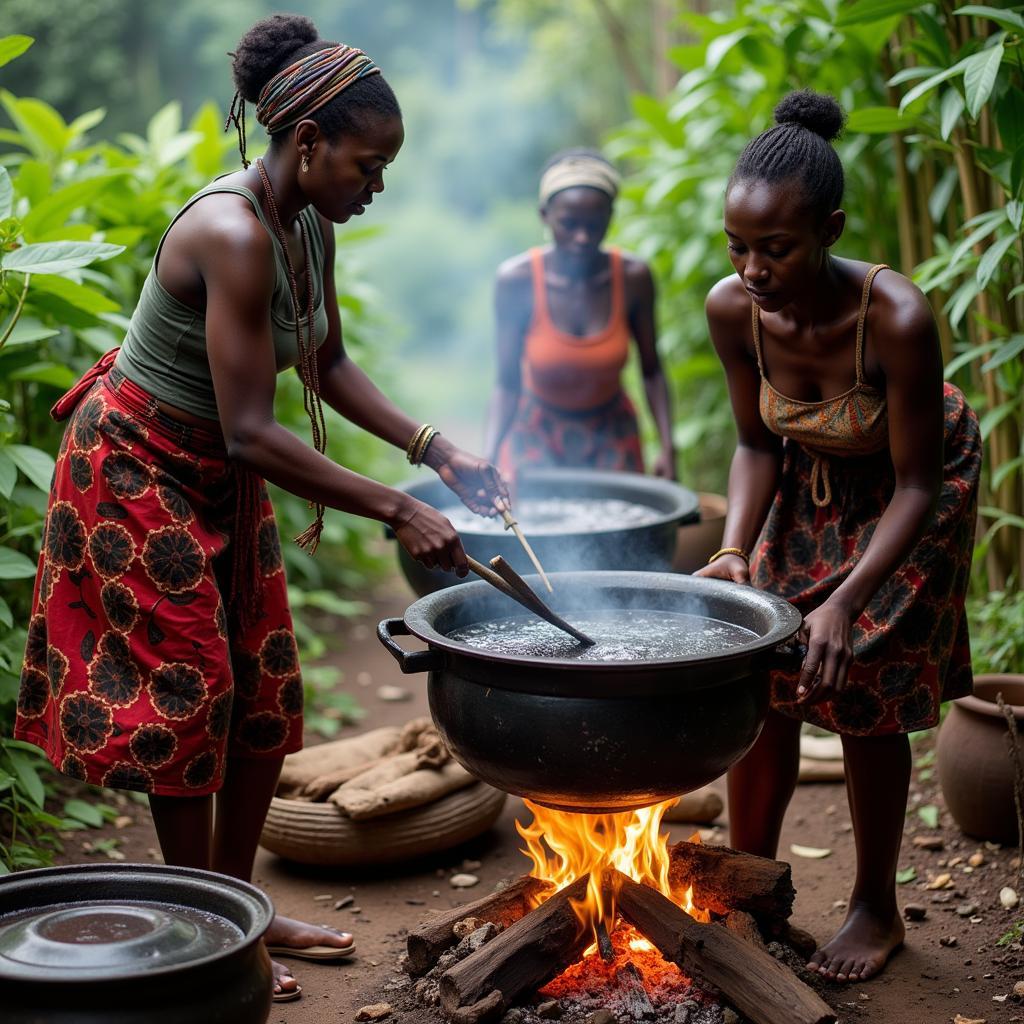Unveiling the World of African Doll Making
African Doll Making is a rich and vibrant tradition deeply woven into the cultural tapestry of the continent. Far beyond mere playthings, these dolls serve as powerful symbols of heritage, artistry, and storytelling, passed down through generations.
More Than Just Dolls: Exploring the Significance
African dolls hold multifaceted roles in various communities. They are not simply toys but act as tools for education, cultural transmission, and even spiritual rituals. In many cultures, dolls are used to teach children about societal norms, gender roles, and traditional customs.
For instance, among the Ashanti people of Ghana, the “Akua’ba” doll, known for its distinctive disc-shaped head, is a fertility symbol given to women hoping to conceive. Similarly, the “Ndebele” dolls of South Africa, with their vibrant beaded attire, represent beauty and are used in coming-of-age ceremonies.
A Tapestry of Materials and Techniques: The Art of Creation
African doll making is as diverse as the continent itself, with each region boasting unique styles, materials, and techniques. From the northern shores of the Mediterranean to the southern tip of the Cape, artisans employ a variety of locally sourced materials.
Wood carving is a prevalent technique, particularly in West Africa, where dolls are often carved from lightweight wood like mahogany or ebony. Clay, another widely available material, is shaped and fired to create dolls, often adorned with intricate details and vibrant paints.
Fabric dolls, often created using scraps of colorful cloth, are popular across the continent. These dolls are frequently adorned with beads, cowrie shells, and other embellishments that add to their visual appeal and cultural significance.
Preserving Heritage in a Modern World: The Future of African Doll Making
The art of African doll making faces challenges in an increasingly globalized world. Mass-produced dolls and toys often overshadow the cultural significance and craftsmanship of traditional dolls. However, there is a growing movement to preserve and revive these ancient traditions.
Organizations and artisans are working tirelessly to promote African doll making through workshops, exhibitions, and online platforms. This resurgence of interest ensures that the legacy of African doll making, with its stories, symbolism, and artistry, continues to inspire and captivate generations to come.
